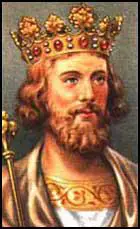King Edward II

Edward, the eldest surviving son of Edward I and Eleanor of Castile. was born in Caernarvon, Wales, in 1284. When he was seventeen he was created Prince of Wales, the first English heir-apparent to bear the title. He accompanied his father on his military campaigns but was not a successful soldier.
Edward became king in 1307 but was soon in conflict with the important barons of the country who considered him to be lazy and indecisive. The barons also disliked the way he ignored their advice on how to run the country. Edward tended to rely on the views of his young, inexperienced friends. One of these, Piers de Gaveston, was particularly influential. He was created Earl of Cornwall, and went Edward left England to marry Isabella of France, the daughter of King Philip IV, he was appointed guardian of the kingdom.
Concerned by the growing influence of Piers de Gaveston, a group of barons asked Edward II to send him into exile. When Edward refused, the barons rebelled and after capturing Gaveston in 1312 they had him murdered.
The barons also became angry about Edward's poor military leadership. In 1314 Edward's army was defeated by Robert the Bruce at Bannockburn. This was followed by risings in Wales and Ireland. Supported by his new favourite, Hugh de Despenser, Edward arrested Thomas, Earl of Lancaster, the leader of the barons, and had him executed.
Edward's wife, Isabella of France, was also very critical of the way her husband was ruling the country. In 1322 she left Edward and went to live with her lover, Roger Mortimer, in France. In 1326 Isabella and Mortimer returned to England and with the support of the barons, forced Edward II to abdicate. Edward was imprisoned and Hugh de Despenser was executed. The following year Mortimer arranged for Edward to to be murdered in Berkeley Castle.
